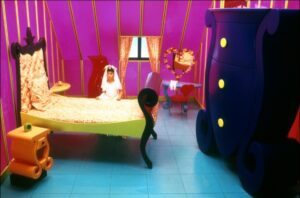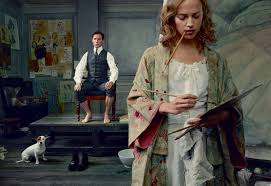Per anni, la comunità transgender è stata oggetto di rappresentazioni provocatorie e spesso controversie sull’ambiguità sessuale. Questo fenomeno ha coinvolto il mondo dell’intrattenimento cinematografico, offrendo una finestra per comprendere meglio il transgenderismo e la sua evoluzione nel tempo.
Mentre l’Europa settentrionale ha mostrato maggiore apertura verso la comprensione del transgenderismo, l’America e il Sud Europa hanno ancora molta strada da fare per affrontare la discriminazione e la violenza rivolte alla comunità transgender. Tuttavia, attraverso il cinema, libri e performance straordinarie, le persone transgender stanno lentamente conquistando il loro posto nella società contemporanea.
Le sfide legate alle questioni di genere rappresentano una delle sfide culturali più significative della nostra era. Gli intellettuali e gli artisti sono attratti da queste sfide, producendo opere che educano e stupiscono il pubblico. La letteratura ha giocato un ruolo cruciale nel processo di auto-accettazione e riconoscimento nella società contemporanea, e le storie come quella di Lili Elbe sono un esempio emblematico.
Lili Elbe, interpretata in modo magistrale da Eddie Redmayne nel film “The Danish Girl,” è stata una delle prime persone transgender a sottoporsi a un intervento chirurgico di riassegnazione di genere nella storia. La sua storia è stata portata alla luce due anni dopo la sua morte, nel 1931, attraverso il libro “Man Into Woman” scritto da Niels Hoyer sotto pseudonimo. Questo libro è stato fondamentale per la rappresentazione delle persone transgender nella letteratura.
Negli anni ’80, gli autori hanno iniziato a esplorare perché molte cliniche di identità di genere consigliavano alle persone transgender di mantenere segrete le proprie storie. La teorica accademica americana Sandy Stone ha scritto “The Empire Strikes Back: A Post-Transsexual Manifesto,” sottolineando il fatto che le persone transgender erano costrette a nascondere la loro identità, mentre il coming out avrebbe portato alla consapevolezza e all’accettazione delle persone LGBT.
Un’altra pietra miliare nella rappresentazione transgender è “Stone Butch Blues” di Leslie Feinberg, che esplora la discriminazione contro un uomo transgender, offrendo una profonda analisi dell’identità di genere.
Storicamente, nei film, i personaggi transgender sono stati spesso raffigurati in modo negativo, come cattivi o assassini, soprattutto negli anni ’60 e ’90. Tuttavia, questa percezione ha subito una svolta positiva con il film belga degli anni ’90 “Ma Vie en Rose.” Con la sua estetica onirica, il film narra le fantasie di un bambino di 7 anni che vuole essere una ragazza, offrendo una visione più comprensiva e compassionevole della questione transgender.
Nonostante la presenza di personaggi gay e lesbiche nei film per giovani, i personaggi transgender sono rimasti rari e spesso poco rappresentati. Un segno positivo di cambiamento è arrivato negli anni 2000 con la straordinaria interpretazione dell’attrice Felicity Huffman in “Transamerica,” una storia unica sulla relazione tra una madre transgender e suo figlio.
Guardando al futuro, c’è la speranza di una rappresentazione più completa e accurata della comunità transgender nei film e nella letteratura. L’evoluzione continua, e attraverso l’arte e l’intrattenimento, la comunità transgender continua a guadagnare visibilità e accettazione nella nostra società in rapido cambiamento.
- Il racconto della comunità transgender nel cinema
For years transexual community has been associated with the provocative but simultaneously controversial idea of sexual ambiguity. The West is currently facing the task of making the comprehension of transgenderism and growing up the first generation of openly transgender children. This process is more accepted in the North part of Europe, while America and Southern Europe are still recording too frequent dramatic episodes of violence and discrimination against the trans community. Constantly blurring the lines between masculinity and femininity, wherever it is FTM or MTF, trans people have been portrayed in several movies and amazing books. Gender issues are surely one of the most relevant cultural challenges of our era. Intellectuals nourish a feeling of attraction to them, and they left to the viewers and to the readers tons of wonderful materials to be marvelled about and, mainly, to be educated. Indeed, literature played a key role in the process of self-acceptance and recognition in contemporary society. Lili Elbe (that has been wonderfully displayed by Eddie Redmayne in "The Danish Girl" movie) is an interesting case to analyze: she was one of the first transexual to receive sex-reassignment surgery in history. 2 years after her death in 1931, the book "Man Into Woman" by Niels Hoyer was published, telling the world using pseudonyms Lili's story. It was crucial due to the fact it was the first representation of transsexual people in literature. Starting from the 80s, authors were reflecting on why gender identity clinics told trans people to keep their histories secret and transphobia. American academic theorist, Sandy Stone wrote "The Empire Strikes Back: A Post-Transsexual Manifesto": an important point of the book is that transgender persons were forced to hide their status and that coming out would inevitably bring LGBT people to self-approval. Another milestone is certainly "Stone Butch Blues" by Leslie Feinberg dealing with the discrimination against a trans-masculine: a deep exploration of gender identity. Historically the first perception of he/the characters in the movie is sad: horror and thrillers from the 60s to the 90s show transgenders always as villains and/or murderers. This negative perception accomplishes a turning point with the Belgian 90s movie "Ma Vie en Rose". With its oniric aesthetics, the movie talks about the fantasies of a 7-year-old boy who wants to be a girl. Even if gay and lesbian presence has been claimed also in movies for young people, transgender characters are still rare and rarely represented. A positive wind of change arrived in the 2000s with the epic performance of actress Felicity Huffman in Transamerica, a unique trans-mother/son relationship story. Hoping for the full-spectrum representation possibilities of the trans community in movies and books, the time has come for emancipation.
- Il racconto della comunità transgender nel cinema








